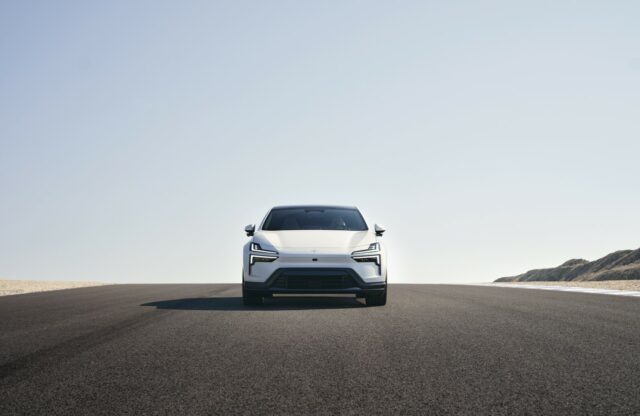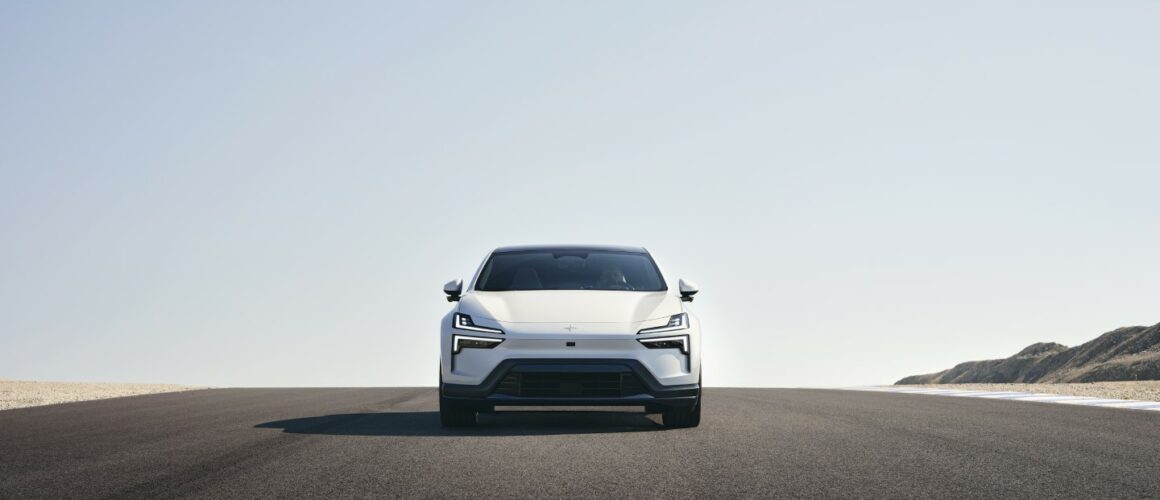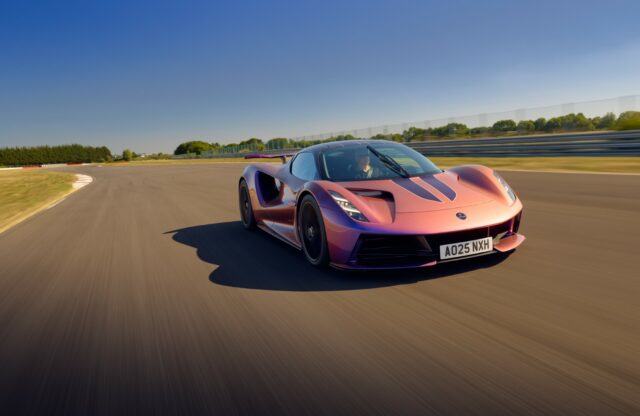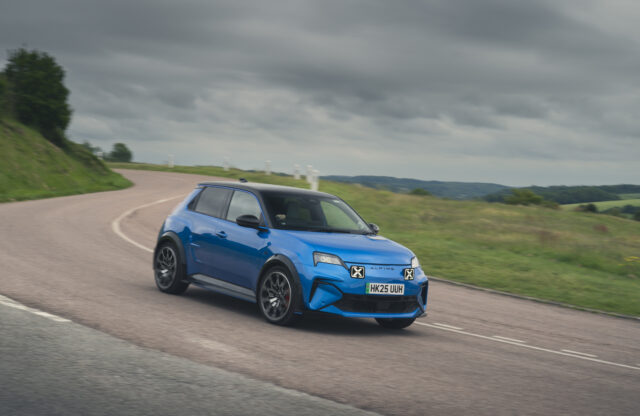January. It’s a month of Mondays that, after the merriment of the festive period, few look forward to – particularly if you’re a car enthusiast. Here in the UK, icy roads are laced with car-killing salt, the days are short and the weather is cold and inclement. For most of us, it means our beloved classics remain cocooned in hibernation, while anonymous daily drivers shoulder the drudgery of commuting.
Yet, serendipitously, this bleak time of year offers an unexpected opportunity – a dress rehearsal for something even more daunting than the January blues: the motor industry’s supposed all-electric future. Bear with me.
If the future really is electric, then the ideal scenario might be this: a fast, comfortable and perhaps even characterful EV for the weekly grind, with a soulful piston-powered classic waiting in the wings for those weekend B-road blasts or long summer getaways. That doesn’t sound so bad now, does it?
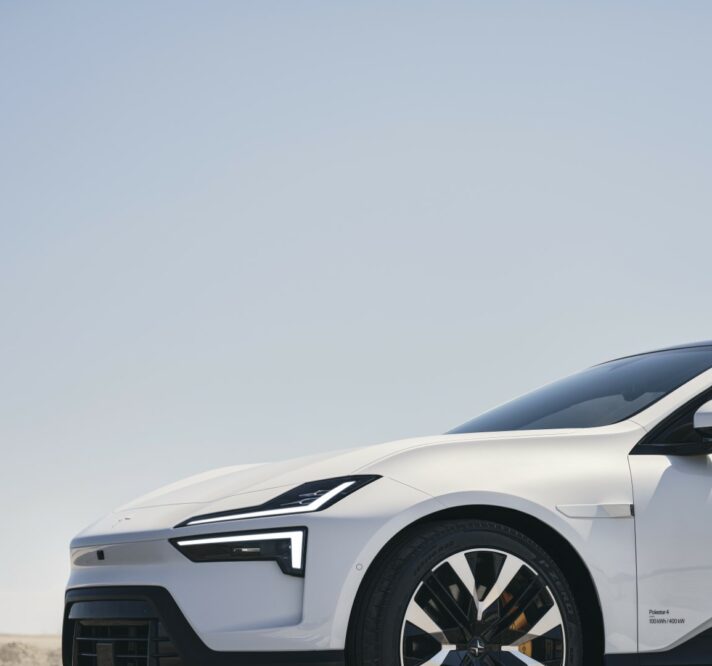
First impressions? It’s a bold, striking machine – and not just because of Polestar’s headline-grabbing deletion of the rear glass

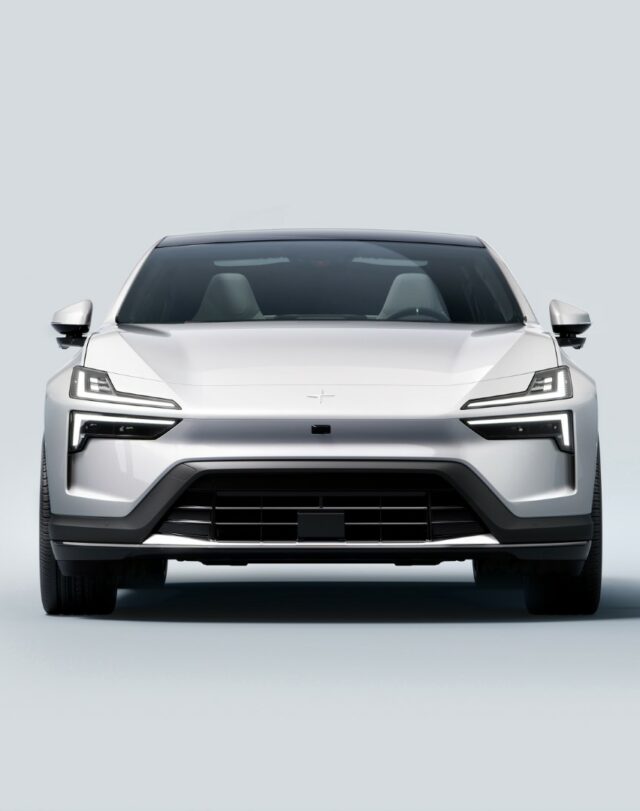
So, when Polestar extended an invitation to test its new 4 – a striking all-electric SUV-coupé that boldly dispenses with a rear window – I couldn’t resist. With up to 536bhp on tap, cool Scandinavian styling and space to seat five in its luxurious cabin, perhaps the 4 offers enough appeal to bridge the gap between the character of a classic and the more practical considerations of a daily driver.
Unlike most Chinese-owned car manufacturers, Polestar carries a level of desirability and name recognition that’s more commonly associated with a legacy brand in the West. Although it has been a bona fide carmaker for only eight years, its origins go back much further.
The story begins with Flash Engineering, a Swedish motor sport team founded in 1996 to compete in the Scandinavian Touring Car Championship. By 2005, it had evolved into Polestar Racing, channelling its racing expertise into creating wild, Volvo-based concept cars.
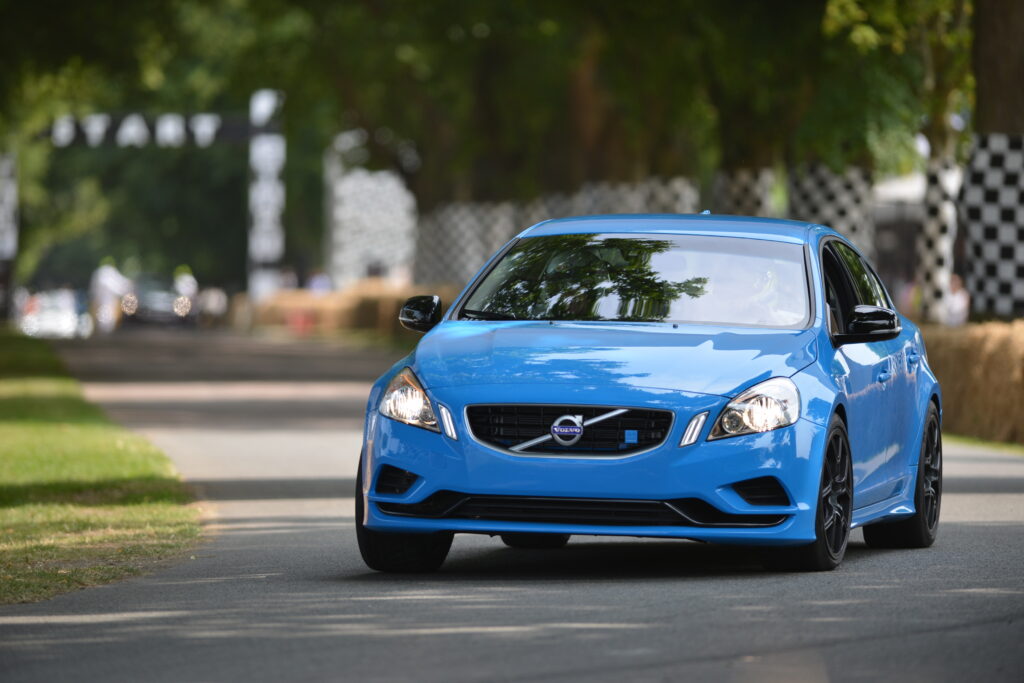
Chinese automotive giant Geely acquired Polestar in 2015, and incorporated it into Volvo, having taken ownership of the Swedish brand five years earlier. By 2017, Polestar had evolved into a fully fledged manufacturer of electric vehicles.
With this history in mind, there’s hope that some of Polestar’s motor sport DNA has been sprinkled into the 4’s driving experience. The top-of-the-range test car awaits me outside the marque’s sleek new headquarters at Bicester Heritage in Oxfordshire. Polestar’s decision to base itself in one of the UK’s hubs for passionate petrolheads only adds to the anticipation that the 4 can deliver.
First impressions? It’s a bold, striking machine – and not just because of Polestar’s headline-grabbing deletion of the rear glass. The Max Missoni-designed silhouette blends the sleek, sloping roofline of a coupé with the loftier stance of a crossover SUV. Closer inspection reveals a host of thoughtful details: functional air inlets behind the front wheels, a subtly illuminated emblem on the bonnet, flush door handles and that satisfyingly symmetrical rear LED light bar.
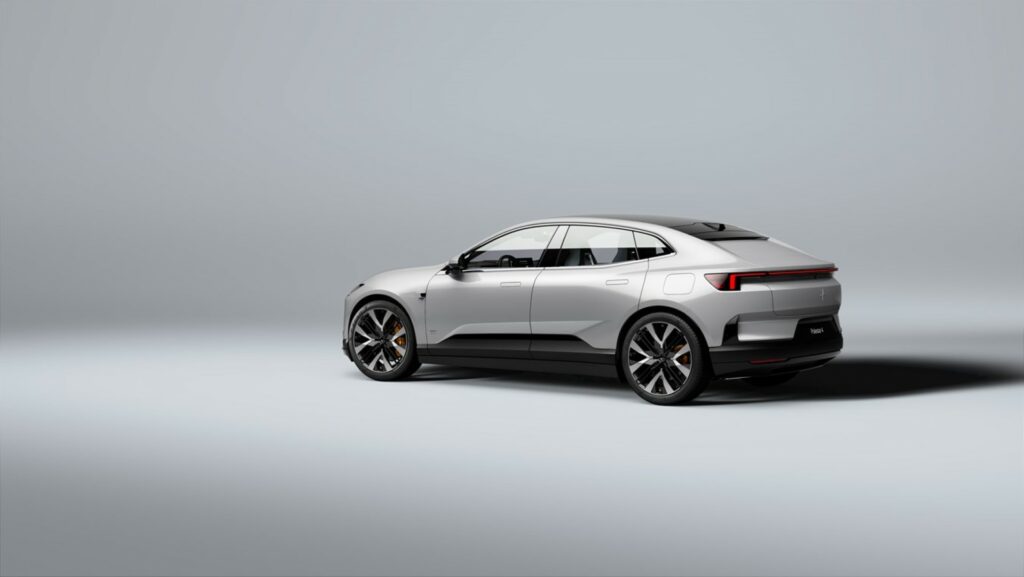
Size-wise, it’s a tricky vehicle to categorise. At nearly five metres long, more than two metres wide and with a three-metre wheelbase, its dimensions mirror those of a BMW X6. However, it appears smaller and nimbler than the aforementioned Bimmer thanks to short overhangs and a roofline that stands just 1.5 metres above terra firma. The 4 is more reminiscent of a Jaguar I-Pace than a full-scale SUV, and, as with that now-discontinued Jag, it lives in the same segment as the Porsche Macan Electric, BMW iX4 and Audi Q6 Sportback e-tron.
Walk up to the car with the black, buttonless key in hand, and the door handles dutifully rise out of the bodywork and invite you inside. Open the frameless driver’s door, climb aboard and you’re greeted by a clean, stylish cabin that’s finished in a tasteful selection of recycled materials, including soft-touch fabrics cleverly made from recycled PET bottles.
The cabin feels bright and airy, dominated by the largest panoramic glass roof I’ve ever seen in a production car. It more than compensates for the absence of a rear window – a deliberate choice by Polestar to achieve the sleek coupé roofline without sacrificing rear-passenger headroom. The result is impressive; at six feet tall, I find the back compartment remarkably spacious, with reclining seats that are exceptionally comfortable. The lack of rear visibility has been remedied with a high-definition camera mounted to the roof.
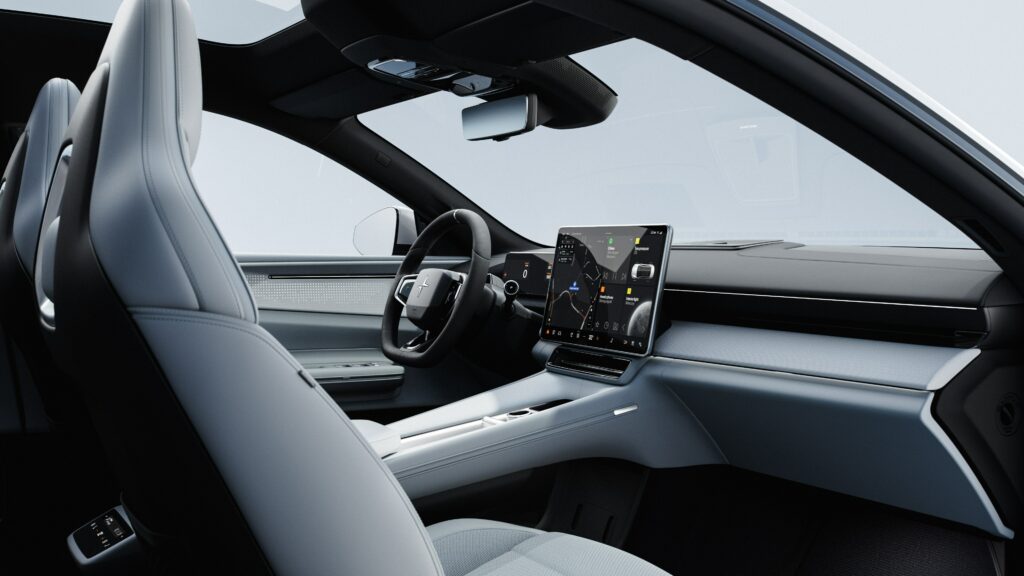
But what’s it like to drive? Well, as with any EV, the first thing you notice is that it’s exceptionally quiet when cruising at low speed on provincial Oxfordshire B-roads. It also feels well built and very refined, with no undue squeaks or rattles to interrupt the serenity of the powertrain or the brilliance of that 12-speaker Harman Kardon Premium Sound System. And, despite the fact this dual-motor Performance model is riding on massive 22-inch wheels, the road noise isn’t too intrusive, either.
The steering, damping and throttle maps each have three modes that can be selected to tailor the driving experience to your preferences. Unfortunately, all of these options are changeable only via the huge 15.4-inch infotainment screen in the centre of the dashboard. Mercifully, the display is crisp and the touchscreen quickly responds to your inputs for the most part.
Frustratingly, most of the car’s functions – even something as basic as opening the glovebox – are controlled exclusively via the central screen. The majority of ‘buttons’ are haptic items on the steering wheel, which also aren’t completely straightforward to operate. This design feels, at best, ergonomically flawed and, at worst, potentially dangerous. That said, the interface’s operating system is intuitive and visually appealing, with clean, attractive graphics. One of my favourite features is the ability to select from nine ambient lighting options inspired by the celestial bodies of the solar system.

The configurable driving modes are a mixed bag. The steering is pretty standard fare for a modern car in its Light and Standard settings: lacking tactility but sharp, accurate and lightly weighted. The most aggressive Firm setting adds little more than artificial weight, offering no real improvement to the driving experience – but that’s a point of personal preference rather than a definitive flaw.
Bumpier sections of road reveal a similar story with the coil-sprung adaptive damping, which feels sporty and controlled in its Standard setting, but progressively gets stiffer and more fidgety when moved from Nimble to Firm, particularly if one of those huge alloy wheels suddenly encounters a harsh bump or pothole.
You’ll be unsurprised to hear that this 536bhp (400kW) all-wheel-drive EV feels almost breathtakingly fast whichever powertrain setting you choose. Pin the throttle pedal from a static start, and you’re forced into the backrest by 506lb ft of torque while the digital speedometer races upwards like a spinning slot machine. Translated to raw numbers, this Long Range Dual Motor model hits 0-62mph in just 3.7 seconds and will reach 124mph flat-out.

The pace is particularly impressive in Performance mode, where both motors permanently drive each axle. In contrast, the Range setting optimises efficiency by disconnecting the front motor during normal driving, but reconnects it when full throttle is applied, unleashing the car’s full performance. All dual-motor 4s boasts a claimed WLTP range of 367 miles from their 94kWh batteries, which is excellent, although real-world figures are likely to be closer to around 300 miles.
Interestingly, the Performance Pack doesn’t boost power or torque, and similarly has no impact on range. Instead, these models receive firmer Polestar Engineered adaptive suspension, forged 22-inch alloys, Pirelli P Zero tyres and Swedish Gold-finished Brembo brake calipers and valve caps. In my view the Performance Pack option box is one that’s probably best left unticked, particularly because it adds £3100 to the standard Long Range Dual Motor’s £66,900 list price.
Supercar-level acceleration is hardly new in the world of EVs, and this alone doesn’t qualify the 4 as a true driver’s car. Its Achilles’ heel, from an engagement perspective, is its 2355kg kerbweight, which becomes increasingly noticeable as your pace and enthusiasm grow. The weight means you never quite feel compelled to take the 4 by the scruff of the neck on a twisty road. Fortunately, most of that mass comes from the enormous battery pack housed within the skateboard chassis, lowering the centre of gravity. When combined with the car’s instant acceleration, large, grippy Pirellis and powerful brakes, the 4 can still cover ground incredibly quickly.

So, what to make of the new Polestar? The 90-mile journey home leaves my daily driver, an Audi TT, feeling almost crude and unrefined in comparison to the effortlessness of the 4. With clever features such as adaptive cruise control, one-pedal driving and that smooth, all-electric power delivery, it practically drives itself, allowing you to relax and savour the cabin’s luxury and comfort.
For me, Polestar is a brand that has just enough legacy provenance to pique the interest of petrolheads, but not so much that I feel electrification has come at the expense of the engagement afforded by a combustion-powered machine. Call me a luddite, but I’m not sure I would enjoy Lotus’s all-electric Eletre SUV in quite the same way, and, as impressive as it is, a brief drive in Porsche’s Taycan left me feeling a little cold.
If, however, you’re in a situation where an EV could fit seamlessly into your life, the Polestar 4 is an appealing machine for the winter months and beyond – especially if you’ve got a classic car tucked away for sunnier days.
Prices for the Polestar 4 begin at £59,990 for the standard single-motor model and from £66,990 for dual-motor variants. For more information, click here.
